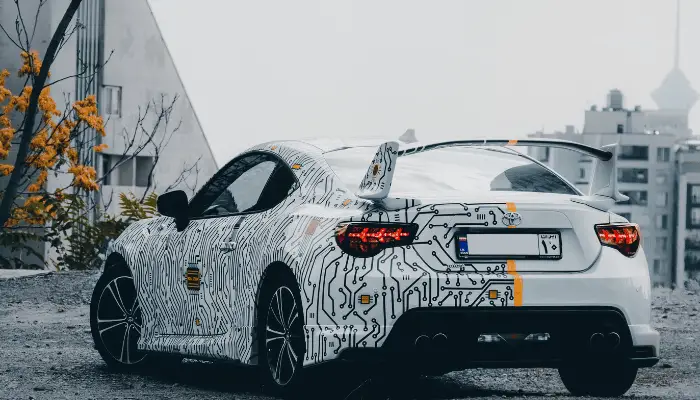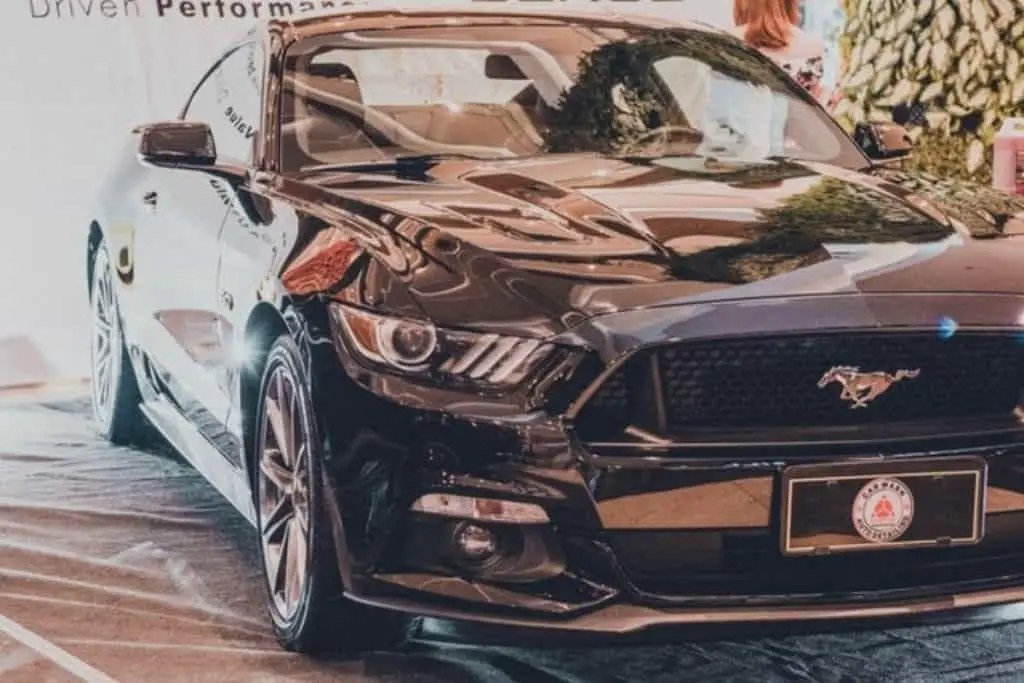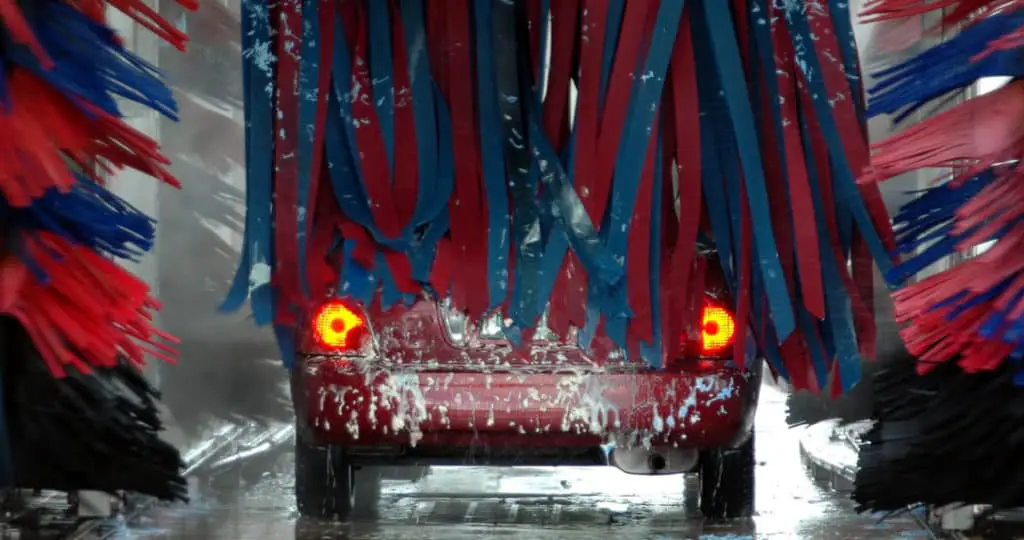- How to Clean Car Carpets Quickly (Without An Extractor) - July 10, 2024
- Can You Touch Up Clear Coat On A Car? Yes and No (Here’s Why) - November 25, 2023
- How To Wax A Car By Hand (For Beginners) - November 14, 2023
Last Updated on January 21, 2025 by Nate Schnell
Vinyl wraps have become a popular way to give cars a stunning, customized appearance. With vibrant colors and unique designs, they offer an aesthetic appeal that’s hard to match. However, maintaining that pristine look requires a specialized care routine. Unlike traditional car paint, vinyl wraps need extra attention to preserve their durability and appearance. If you’re wondering how to clean and protect your vinyl wrap effectively, this guide will provide you with expert advice and practical tips to keep your car looking like new.
Why Vinyl Wrapped Cars Need Special Care
Vinyl wraps are not as resilient as traditional paint jobs and can be prone to wear and tear over time. They are especially susceptible to damage from road debris, environmental exposure, and improper cleaning techniques. Regular maintenance not only ensures the wrap looks great but also extends its lifespan, saving you the cost and hassle of repairs or replacements.
A vinyl wrap functions as a protective layer over your car’s paint, but it requires care to remain intact. Failure to follow the right cleaning practices can result in peeling, bubbling, or fading, which compromises both the appearance and durability of the wrap.
When to Wash Your Car After a Vinyl Wrap Installation
If you’ve just had a vinyl wrap applied, it’s important to wait at least 24 to 48 hours before washing your car. This curing period allows the adhesive to fully bond with your car’s surface, ensuring the wrap adheres properly. Washing too soon can cause peeling or bubbling, and exposure to extreme temperatures during this time can weaken the adhesive, leading to premature wear.
Best Practices for Cleaning a Vinyl Wrapped Car
Proper cleaning techniques are essential for maintaining the look and longevity of your vinyl wrap. Hand washing is the safest option, as it minimizes the risk of damage. Choose a shaded area for washing to avoid heat-related expansion or contraction of the wrap, which could compromise its integrity. Use lukewarm water and a high-quality car wash soap specifically formulated for vinyl surfaces.
Always start by pre-rinsing the car with low-pressure water to remove loose dirt and debris. This step reduces the chances of scratching the wrap during the washing process. Use a clean microfiber wash mitt or sponge with the two-bucket wash method, which involves one bucket for soapy water and another for rinsing. This technique prevents dirt from transferring back onto the wrap.
For stubborn stains such as bird droppings, tree sap, or bug splatter, apply a gentle cleaning solution and let it sit for a few minutes before wiping. Avoid abrasive scrubbing, which can damage the wrap’s surface.
Pressure Washing: Dos and Don’ts
Using a pressure washer on a vinyl wrapped car is acceptable if done correctly. Always use an adjustable spray nozzle with low pressure to avoid damaging the wrap or compromising its adhesive. Spray from a safe distance, ideally more than 12 inches away, and avoid targeting corners or edges, where the wrap is more vulnerable to peeling.
Never use extremely hot water or high-pressure nozzles, as these can weaken the adhesive and cause bubbling or tearing. Avoid pressure washing in direct sunlight, as the combination of heat and pressure can amplify the risk of damage.
Why Automatic Car Washes Are Not Recommended
Automatic car washes pose significant risks to vinyl wraps. The harsh chemicals, abrasive brushes, and high-pressure jets commonly used in these systems can scratch the wrap or lift its edges. Instead, hand washing with proper tools and techniques ensures the wrap stays intact and looks its best.
Protecting Your Vinyl Wrap
Protection is key to prolonging the life of your vinyl wrap. Options such as ceramic coating, paint protection film (PPF), or wax can provide an additional layer of defense against environmental elements.
Ceramic coatings are a popular choice for vinyl wraps as they create a protective barrier that enhances durability and adds a glossy finish. Unlike traditional wax, ceramic coatings are long-lasting and resistant to UV rays, dirt, and water. PPF, often made by the same manufacturers as vinyl wraps, offers similar benefits and can be applied over the wrap for added protection.
While waxing is another viable option, it’s important to avoid using wax on matte wraps, as it can leave streaks and uneven finishes. For glossy wraps, regular waxing can enhance shine and provide extra protection against physical wear.
Stain Removal Techniques for Vinyl Wraps
Accidents happen, and stains are inevitable. For light stains, use a clean microfiber cloth or sponge with a gentle cleaning solution. Apply the solution to the affected area, let it sit for a moment, and then wipe away the stain. For more stubborn contaminants like tree sap or bug splatter, isopropyl alcohol, denatured alcohol, or a vinyl-safe detailing spray can be effective. Always rinse the area with clean water afterward to remove any residue.
Drying a Vinyl Wrapped Car
Drying is just as important as washing when it comes to preserving your vinyl wrap. Instead of using towels, which can cause scratches or swirl marks, opt for a car blower designed for drying vehicles. These devices use air to remove water without physical contact, ensuring the wrap remains unblemished.
Final Thoughts on Vinyl Wrap Maintenance
Maintaining a vinyl wrapped car requires diligence, but the effort is worth it for the stunning results. By adopting proper washing techniques, protecting the wrap with ceramic coatings or wax, and avoiding common pitfalls like automatic car washes, you can keep your car looking vibrant and eye-catching for years to come. With regular care, your vinyl wrap will continue to turn heads wherever you go.



